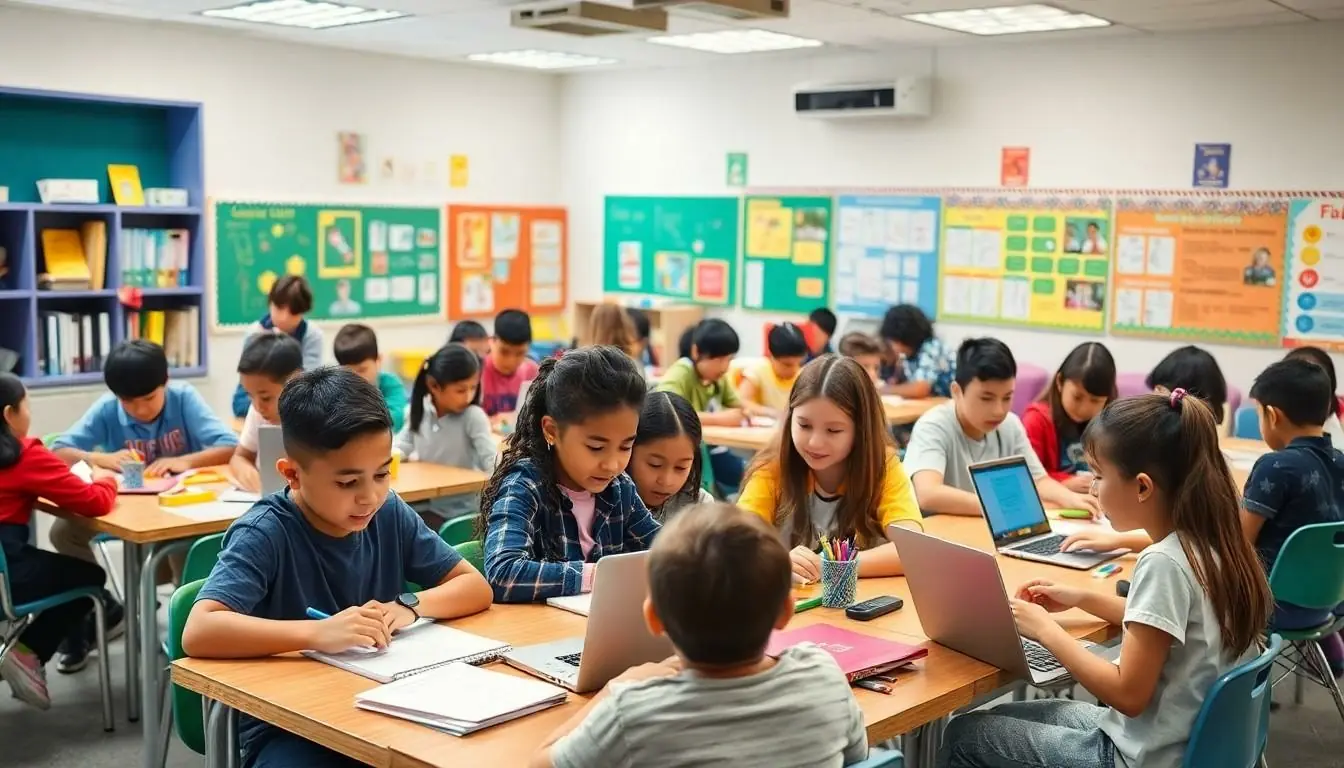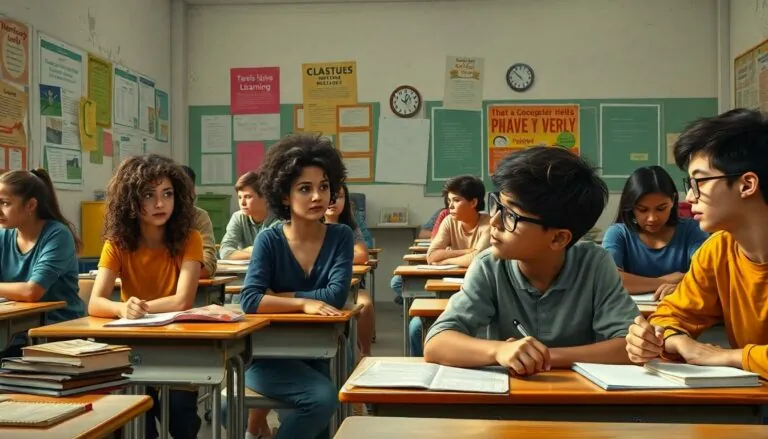Table of Contents
ToggleIn a world where traditional public schools often seem more like a circus than a classroom, many parents are on the hunt for alternatives that actually make learning fun. Whether it’s a Montessori school that feels like a laid-back coffee shop or a homeschooling setup that lets kids explore the great outdoors, the options are as diverse as a box of crayons.
Overview of Public School Alternatives
Parents increasingly turn to public school alternatives, recognizing the unique educational experiences they offer. Options include charter schools, known for personalized learning and innovative curricula. Homeschooling continues to gain popularity, as parents design their education plans to fit their children’s needs.
Education pods emerge as another choice, allowing small groups of students to learn together in a supportive environment. Online schooling also flourishes, providing flexibility and access to diverse resources across the globe. Montessori programs foster independence and creativity, engaging students in hands-on learning experiences.
Unschooling approaches emphasize self-directed education, encouraging children to explore their interests without a predetermined curriculum. Waldorf education focuses on artistic expression and practical skills, integrating nature and imagination into all subjects.
These alternatives cater to families seeking tailored educational paths, addressing varied learner styles and preferences. Many parents find that these options effectively enhance their children’s motivation and engagement in learning. As educational alternatives grow, they demonstrate diverse ways to foster academic success and personal development outside traditional settings.
Types of Public School Alternatives
Public school alternatives offer diverse educational experiences that cater to various student needs. Many families explore these options to find the best fit for their children’s unique learning styles.
Charter Schools
Charter schools operate independently of district regulations, allowing for innovative teaching methods. They often emphasize specific curricula, such as STEM, arts, or language immersion. Enrollment typically involves a lottery process, ensuring equitable access to these specialized programs. Families appreciate the smaller class sizes that foster individualized attention, enhancing the learning experience. Evidence shows students in charter schools sometimes outperform their peers in traditional settings, making them a popular choice among parents.
Magnet Schools
Magnet schools feature specialized programs designed to attract students from various districts. They focus on themes like science, technology, or the arts, promoting rigorous academic standards. Admission criteria may include testing or auditions, ensuring students are well-suited for the chosen program. Students benefit from unique learning opportunities, such as advanced placement courses and partnerships with local organizations. This emphasis on specialized education often leads to increased engagement and achievement among students.
Online Learning Platforms
Online learning platforms provide flexible education alternatives for students of all ages. These programs allow learners to access a wide range of courses from home or any location with internet connectivity. Students can choose between synchronous and asynchronous learning formats, accommodating diverse schedules and lifestyles. Many platforms incorporate interactive elements, such as videos and discussion forums, to enhance engagement. Recent studies indicate that well-structured online programs can yield academic successes comparable to traditional schooling, making them an attractive option for families.
Benefits of Public School Alternatives
Public school alternatives offer numerous advantages that cater to individual student needs. Families increasingly favor unique educational options to enhance learning experiences outside traditional frameworks.
Flexibility in Curriculum
Flexibility in curriculum design stands as a hallmark of public school alternatives. Parents select programs that align with their children’s interests, encouraging exploration in specialized subjects like arts or sciences. In homeschooling environments, families tailor lessons to fit learning styles and schedules. Online schooling provides learners with courses that accommodate varying paces, enabling mastery before progressing. Through a combination of these flexible pathways, students enjoy opportunities to delve into topics that spark curiosity and enthusiasm.
Personalized Learning Experience
Personalized learning experiences thrive within alternative education settings. Charter schools often create small class sizes, fostering close relationships between students and educators. Teachers develop individualized lesson plans that cater to specific learning needs. Education pods allow peers to collaborate while receiving targeted assistance from tutors. Unschooling promotes self-directed learning, encouraging students to pursue their passions at their own pace. Such approaches empower learners, boost confidence, and cultivate a lifelong love of learning.
Challenges of Public School Alternatives
Public school alternatives face various challenges that impact their effectiveness and accessibility. These obstacles often include funding discrepancies and equitable access to educational resources.
Funding and Resource Allocation
Funding for public school alternatives differs significantly from traditional public schools. Many alternatives rely on grants, donations, and tuition, which can lead to inconsistent resources. Educational programs often struggle to maintain sustainability without reliable funding. Charter schools may receive a portion of public funds but can still encounter financial limitations. Some online schooling options depend on parental contributions, creating disparities in resource availability. Consequently, the lack of consistent financial support can hinder curriculum development and staffing quality.
Accessibility and Equity
Accessibility presents another critical challenge for families considering public school alternatives. Not all alternatives are equally available across geographic regions, which affects students’ options. Rural areas often lack adequate access to quality alternatives, pushing students into traditional schools. Transportation issues further complicate this landscape, as some families may find travel to distant schools burdensome. Additionally, socioeconomic factors can create barriers, limiting participation for lower-income families. Ensuring equitable access to diverse educational opportunities remains a significant obstacle in the landscape of public school alternatives.
Conclusion
Exploring public school alternatives opens up a world of educational possibilities for families. Each option offers unique benefits that cater to different learning styles and preferences. From the hands-on approach of Montessori to the flexibility of online learning, parents can find solutions that align with their children’s needs.
While challenges like funding and accessibility persist, the growing interest in alternative education highlights a shift toward more personalized learning experiences. As parents navigate these options, they can empower their children to thrive in environments that foster engagement and creativity. The future of education is diverse and filled with potential, allowing families to choose paths that best support their children’s growth and success.








